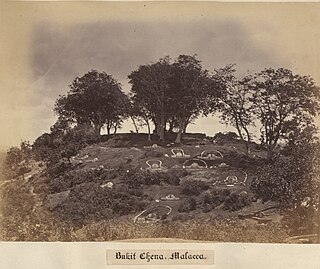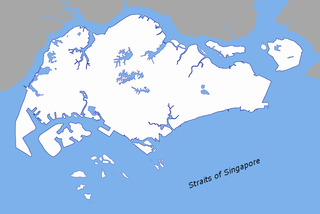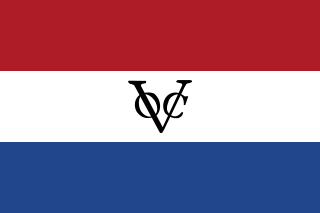| Malacca clock tower | |
|---|---|
 | |
| Location | Dutch Square, Malacca City, Malaysia |
| Height | 50 feet |
| Built | 1886 |
| Built for | Tan Beng Swee |
The Malacca clock tower is a 19th century clock tower situated in Dutch Square, Malacca City, Malaysia.
| Malacca clock tower | |
|---|---|
 | |
| Location | Dutch Square, Malacca City, Malaysia |
| Height | 50 feet |
| Built | 1886 |
| Built for | Tan Beng Swee |
The Malacca clock tower is a 19th century clock tower situated in Dutch Square, Malacca City, Malaysia.
The clock tower was built in 1886 by Tan Jiak Kim, a wealthy businessman and philanthropist, in memory of his late father Tan Beng Swee who died in 1884. It replaced an earlier clock tower erected in 1873 to house a clock donated by his father. [1] [2] [3] The current clock tower was originally white but was changed to red during the British administration along with the other colonial buildings in the square including the Stadthuys and Christ Church.
The clock tower is 50 feet high with a four-face clock with Roman numerals. For almost a century, it is said, the original clock never stopped until it was replaced in 1982. [4]

The Strait of Malacca is a narrow stretch of water, 500 mi long and from 40 to 155 mi wide, between the Malay Peninsula to the northeast and the Indonesian island of Sumatra to the southwest, connecting the Andaman Sea and the South China Sea. As the main shipping channel between the Indian and Pacific oceans, it is one of the most important shipping lanes in the world. It is named after the Malacca Sultanate that ruled over the strait between 1400 and 1511, the center of administration of which was located in the modern-day state of Malacca, Malaysia.

Bukit China is a hillside of historical significance in Malacca City, the capital of the Malaysian state of Malacca. It is located several kilometres to the north from the historical centre of Malacca. The site is today surrounded by the modern city on all sides.
Tun Musa bin Hitam is a Malaysian retired politician who served as the Deputy Prime Minister of Malaysia from 1981 to 1986, serving under Mahathir Mohamad. He was the chairman of Sime Darby Berhad.

Tun Sir Tan Cheng Lock KBE, SMN, DPMJ, JP was a Malaysian Peranakan businessman and a key public figure who devoted his life to fighting for the rights and the social welfare of the Chinese community in Malaya. Tan was also the founder and the first president of the Malayan Chinese Association (MCA), which advocated his cause for the Malayan Chinese population.

Tan Tock Seng was a Malacca-born merchant and philanthropist from Singapore.

Malacca City is the capital city of the Malaysian state of Malacca, in Melaka Tengah District. It is the oldest Malaysian city on the Straits of Malacca, having become a successful entrepôt in the era of the Malacca Sultanate. The present-day city was founded by Parameswara, a Sumatran prince who escaped to the Malay Peninsula when Srivijaya fell to the Majapahit. Following the establishment of the Malacca Sultanate, the city drew the attention of traders from the Middle East, South Asia, and East Asia, as well as the Portuguese, who intended to dominate the trade route in Asia. After Malacca was conquered by Portugal, the city became an area of conflict when the sultanates of Aceh and Johor attempted to take control from the Portuguese.

The Singapore Strait is a 113 km-long (70 mi), 19 km-wide (12 mi) strait between the Strait of Malacca in the west and the South China Sea in the east. Singapore is on the north of the channel, and the Indonesian Riau Islands are on the south. The two countries share a maritime border along the strait.

The Sultan Abdul Samad Building is a late-19th century building located along Jalan Raja in front of Dataran Merdeka and the Royal Selangor Club in Kuala Lumpur, Malaysia. The building originally housed the offices of the British colonial administration, and was known simply as Government Offices in its early years. In 1974, it was renamed after Sultan Abdul Samad, the reigning sultan of Selangor at the time when construction began.

Republic Plaza is a skyscraper in Downtown Core, Singapore. It comprises two towers and a 10-storey podium. The first tower, Republic Plaza I, has 66 floors and a height of 280 metres (920 ft), and has a varying octagonal-cross section, while its interior allows for flexible space usage by tenants. The second tower, Republic Plaza II, is 23 stories tall, while the podium contains a three-floor retail area.

The establishment of a British trading post in Singapore in 1819 by Sir Stamford Raffles led to its founding as a British colony in 1824. This event has generally been understood to mark the founding of colonial Singapore, a break from its status as a port in ancient times during the Srivijaya and Majapahit eras, and later, as part of the Sultanate of Malacca and the Johor Sultanate.

The term "British Malaya" loosely describes a set of states on the Malay Peninsula and the island of Singapore that were brought under British hegemony or control between the late 18th and the mid-20th century. Unlike the term "British India", which excludes the Indian princely states, British Malaya is often used to refer to the Federated and the Unfederated Malay States, which were British protectorates with their own local rulers, as well as the Straits Settlements, which were under the sovereignty and direct rule of the British Crown, after a period of control by the East India Company.

Piracy in the Strait of Malacca has long been a threat to ship owners and the mariners who ply the 900 km-long sea lane. In recent years, coordinated patrols by Indonesia, Malaysia, Thailand, and Singapore along with increased security on vessels have sparked a sharp downturn in piracy.

Tan Kim Seng, was a prominent Straits-born Chinese merchant and philanthropist in Singapore in the 19th century.

Keong Saik Road is a one-way road located in Chinatown within the Outram Planning Area in Singapore. The road links New Bridge Road to Neil Road, and is intersected by Kreta Ayer Road.

Dutch Malacca (1641–1825) was the longest period that Malacca was under foreign control. The Dutch ruled for almost 183 years with intermittent British occupation during the Napoleonic Wars (1795–1815). This era saw relative peace with little serious interruption from the Malay sultanates due to the understanding forged between the Dutch and the Sultanate of Johor in 1606. This time also marked the decline of the importance of Malacca. The Dutch preferred Batavia as their economic and administrative centre in the region and their hold in Malacca was to prevent the loss of the city to other European powers and, subsequently, the competition that would come with it. Thus, in the 17th century, with Malacca ceasing to be an important port, the Johor Sultanate became the dominant local power in the region due to the opening of its ports and the alliance with the Dutch.

The Federal Court of Malaysia is the highest court and the final appellate court in Malaysia. It is housed in the Palace of Justice in Putrajaya. The court was established during Malaya's independence in 1957 and received its current name in 1994.

Christ Church, Malacca, is an 18th-century Dutch-built Anglican church in the city of Malacca City, Malaysia. It is the oldest functioning Protestant church in Malaysia and is within the jurisdiction of the Lower Central Archdeaconry of the Anglican Diocese of West Malaysia.

Saint Paul's Church is a historic church building in Malacca City, Malaysia, that was originally built from 1566 to 1590. It is the oldest European building east of India. It is located on the summit of St. Paul's Hill.

Malacca, officially the Historic State of Malacca, is a state in Malaysia located in the southern region of the Malay Peninsula, facing the Strait of Malacca. The state is bordered by Negeri Sembilan to the north and west and Johor to the south. The exclave of Tanjung Tuan also borders Negeri Sembilan to the north. Its capital is Malacca City, which has been listed as a UNESCO World Heritage Site since 7 July 2008. Malacca City is 148 kilometres southeast of Malaysia's capital city Kuala Lumpur, 235 kilometres northwest of Johor's largest city Johor Bahru and 95 km northwest of Johor's second largest city, Batu Pahat.
2°11′40″N102°14′56″E / 2.19432°N 102.24891°E